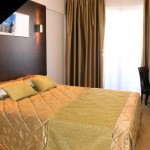
Larnaca
Larnaca is a city on the southern coast of Cyprus and the capital of the eponymous district. It is the third-largest city in the country, after Nicosia and Limassol, with an urban population of 84,591 (2011).
Larnaca is known for its palm-tree seafront, the Church of Saint Lazarus, the Hala Sultan Tekke, the Kamares Aqueduct and its medieval fort. It is built on the ruins of ancient Citium, which was the birthplace of Stoic philosopher Zeno.
Larnaca is home to the country’s primary airport, Larnaca International Airport. It also has a (both passenger and cargo) seaport and a marina.
History
The former city-kingdom of Kition was originally established in the 13th century BC. New cultural elements appearing between 1200 BC and 1000 BC (personal objects, pottery, new architectural forms and ideas) are interpreted as indications of significant political changes and the arrival of the Achaeans, the first Greek colonists of Kition. Around the same time, Phoenicians settled the area.
At the archaeological sites of Kiteon, remains that date from the 13th century BC have been found. Around 1000 BC, Kition was rebuilt by Phoenicians and it subsequently became a center of Phoenician culture. The remains of the sites include cyclopean walls and a complex of five temples and a naval port.
It was conquered in the first millennium BC by a series of great powers of the region. First by the Assyrian Empire, then by Egypt. Like most Cypriot cities, Kition belonged to the Persian or Achaemenid Empire. In 450 BC, the Athenian general Cimon died at sea, while militarily supporting the revolt against Persia’s rule over Cyprus. On his deathbed, he urged his officers to conceal his death from both their allies and the Persians.
Strong earthquakes hit the city in 76 AD and the year after.
Earthquakes of 322 AD and 342 “caused the destruction not only of Kition but also of Salamis and Pafos”.Kition’s harbor silted up, and the population moved to the seafront farther south, sometime after this. (Contributing factors to the silting are thought to have been earthquakes, deforestation and overgrazing.)
The commercial port was located at Skala, during the Ottoman Period. Skala is the name of the seashore immediately south of the Larnaca castle—and its neighborhood. The city is sometimes colloquially referred to as “Skala” (Greek: Σκάλα) meaning “ladder” or “landing stage”, referring to the historical port.
The Kamares aqueduct was built in 1747—bringing water to the city from a source around six miles (9.7 km) from the city.






